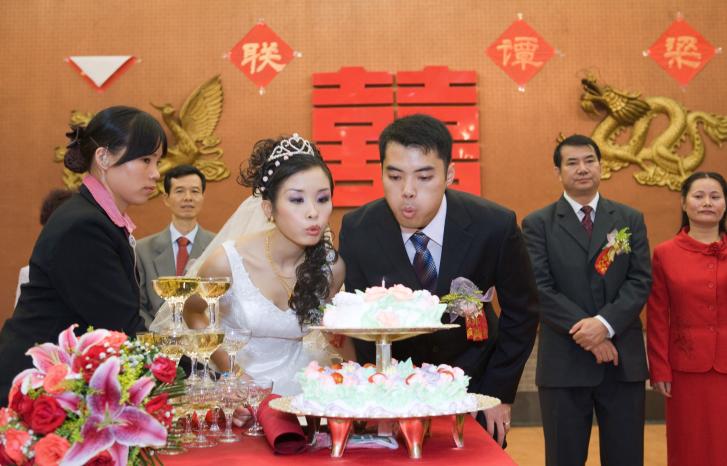“If you develop a game where the gamers may choose – or not choose – homosexuality, the computer game company chooses the path of least resistance. Financially, they have it both ways. They reach the mainstream audience, but they can also approach alternative circles. This provides unique possibilities for representation, but can also be challenging,” says Kim Johansen Østby.
Johansen Østby is PhD research fellow at Department of Media and Communication at the University of Oslo. He is about to complete his PhD dissertation on representations of homosexuality and gender in western computer games.
“I look at what storylines the games offer, what social norms they express, the characters available, and how the gamer may interact with these.”
“I don’t exist”
“The computer game culture is highly heteronormative, and these games have generally stayed well clear of homosexuality. But lately we’ve seen a few minor attempts at giving a broader representation,” says Østby.

In 2014, the Swedish organisation RFSL (Swedish Federation for Lesbian, Gay, Bisexual and Transgender Rights) published a report developed in collaboration with Sverok – The Swedish Gaming Federation. They had interviewed eighty young gay, lesbian, bisexual and transgendered people between the age of 18 to 34 about their experiences with video and computer games.
“It may be briefly summarised with the following sentence: “I don’t exist”. For these young people, gaming was a predominantly negative experience in the sense that they could not identify themselves with the characters and the storylines in the games,” says Østby.
Gay, lesbian and transgendered people are not considered a gamer market.
“At the same time, there is little queer activism related to computer games, and they have received little attention in the queer culture.”
May bypass homosexuality
Adrienne Shaw’s research is an important reference for Østby. Shaw is a media researcher at Temple University in the U.S., and she is the author of the book Gaming at the Edge. Sexuality and Gender at the Margins of Gamer Culture.
“Shaw points to the difference between what she calls ‘diversity’ and what she calls ‘aesthetic pluralism’. She uses the game Indigo Prophecy (Fahrenheit) as example. In this game, one of the characters’ neighbours is gay. In the only conversation with this character, it is possible to skip the dialogue alternatives that involve his sexuality. Games such as e.g. The Elder Scrolls V: Skyrim has a marriage system with a computer-controlled selection of characters. Here, the gamer may be married to whomever he or she chooses independent of gender and race. This is a good thing. But it is like having a gay button, as game designer Anna Anthropy calls the phenomenon. You make your own choices, and this might as well be not to choose alternative and apparently controversial contents.”
“The computer game culture is highly heteronormative, and these games have generally stayed well clear of homosexuality.”
This is what Shaw calls aesthetic pluralism. Those who choose to play heterosexually may continue to do so, without any disturbance or challenges. This does not foster diversity.
Østby calls this so-called gay button ‘mechanic homosexuality’. It requires that that the gamer must take responsibility for the diversity within the game.
“The fact that the gamer are given various choices is not problematic in itself. This is part of the game media’s unique feature. Games encourage participation and exploration differently from other media, and being able to make personal choices can be very enthralling and exiting. But if the goal is broader representation it is not particularly fortunate if the dominant practice is that the ‘alternative’ contents are subject to choice and may be concealed. This is particular for computer games. Imagine elective characters in other media, whether film or literature! You cannot make such choices in any other cultural expression.”
See also: Online computer games force women into the closet
Games stigmatised as unserious
According to Østby, computer games are to a very little extent treated as part of the media culture as such, but rather as its own, isolated culture.
“If you compare it with the film industry for instance, journalists and researchers pay very little attention to games as a cultural expression, despite the fact that more and more people play. Games are stigmatised as unserious and childish.”
One might think that in computer games, where apparently everything is possible, diversity within sexualities and gender expressions would be possible.
“The game industry is still highly conservative in terms of gender and sexuality. Even developing games with female leading characters is often considered financially risky and difficult. Taking this into consideration, the negligence of alternative representations of sexuality is probably not that strange.”
Male homosexuality more ‘dangerous’
We are beginning to see a change, however. In his dissertation, Østby analyses two video game series from the big Canadian game company BioWare. Both Mass Effect and Dragon Age have been released in three editions thus far.
“BioWare has a major creative vision and invest in the production of high-quality large-scale games. They’re probably conscious of the diversity issue, and in various interviews that I’ve read, they’ve expressed a clear vision that they want to do something out of the ordinary. This is especially evident in the two mentioned game series.”

In the first two editions of Mass Effect, there were queer female characters. Only in the third edition, which arrived in 2012, was one male gay character introduced – the soldier Steve Cortez. Dragon Age has had bisexual male characters since the beginning, but here too an exclusively gay character was introduced in the third edition in 2014. This game also addresses topics such as transgender and BDSM.
“Female homosexuality is generally much more visible and more often referred to than male homosexuality. This is something I find problematic. Male homosexuality is apparently more ‘dangerous’. At the same time, most of the female leading characters appear typically heterosexually attractive. There are few tomboys and androgynous female characters, for instance. Most of the male leading characters also appear very straight.
Choice within certain frames
Both Mass Effect and Dragon Age are so-called role-playing games that are played offline, that is, alone.
“As a gamer, you play the leading part, which is a character that you’ve created yourself, based on the game company’s constraints. For instance, you may choose gender and appearance, and as the story goes you may choose various alternatives scripted by the company.”
Mass Effect is a science fiction series, while Dragon Age portrays a medieval fantasy universe.
“What is typical for these games is that you may choose some of the outcomes. You can control conversations and your character’s development, how you solve conflicts, what kind of moral you want – whether you want to be a hero or a villain. You have a certain amount of freedom, but only within the game company’s framework, since they are the ones who have programmed everything.”
Even developing games with female leading characters is often considered financially risky and difficult.
In the two game series examined by Østby, you can also create gay or bisexual leading characters.
“In these instances, BioWare does not create games especially for homosexuals, or heterosexuals for that matter. Everybody can use the same media text, and all the gamers have the opportunity to meet a diverse set of characters and interact with them in various ways. In these games many of the sexuality representations depend on the gamer’s choice and interaction. This structure of alternatives can be problematic with regards to representation in a larger cultural perspective. But it is nevertheless important to look at how games like these encourage a diverse set of gamers to gather around a common game. The experience may be adjusted according to one’s own preferences, and this may contribute to the creation of a more inclusive and common game culture.”
The games reflect the culture
At a lecture recently held by Østby, one of the gamers in the audience thought that the lack of positive representation of homosexuality in games such as The Witcher 3, is due to an attempt to make the plot more historically correct.
“It is problematic to use historical correctness as an argument in the defence of a game based on a universe filled with magic, dragons and monsters. As Shaw argues, if we think that representation is important because it provides the opportunity to imagine a world in new and other ways, why can’t these new and other ways include a bigger acceptance of gender and sexual diversity? Fortunately, we’ve begun to see a change within the game industry and culture. Independent of whether the contents are subject to choice or obligatory, it is important to take these representations seriously. Our own culture is reflected in the computer games, and here it may be confirmed, negotiated, and challenged in different ways than in other media,” says Østby.
See also: Hidden stories about sex and gender in the Norwegian Queer Archive
Translated by Cathinka Dahl Hambro



